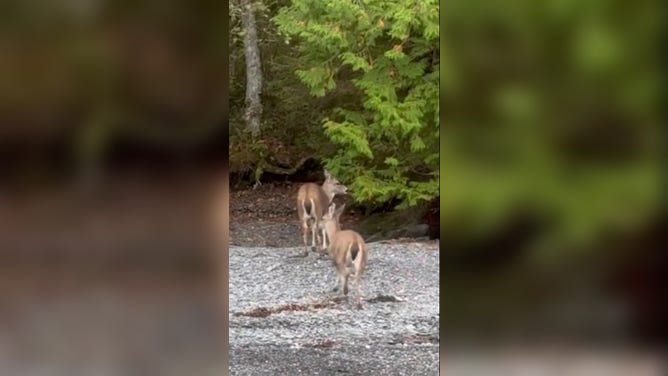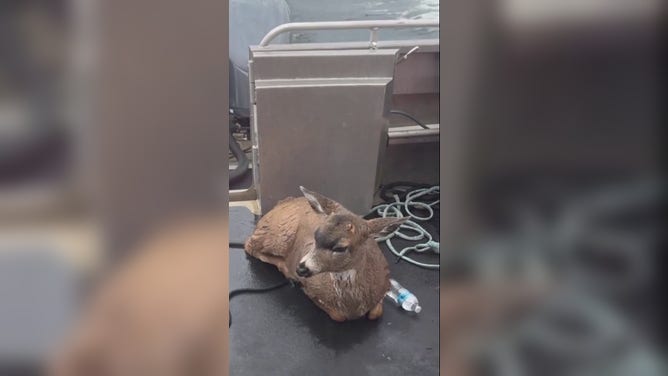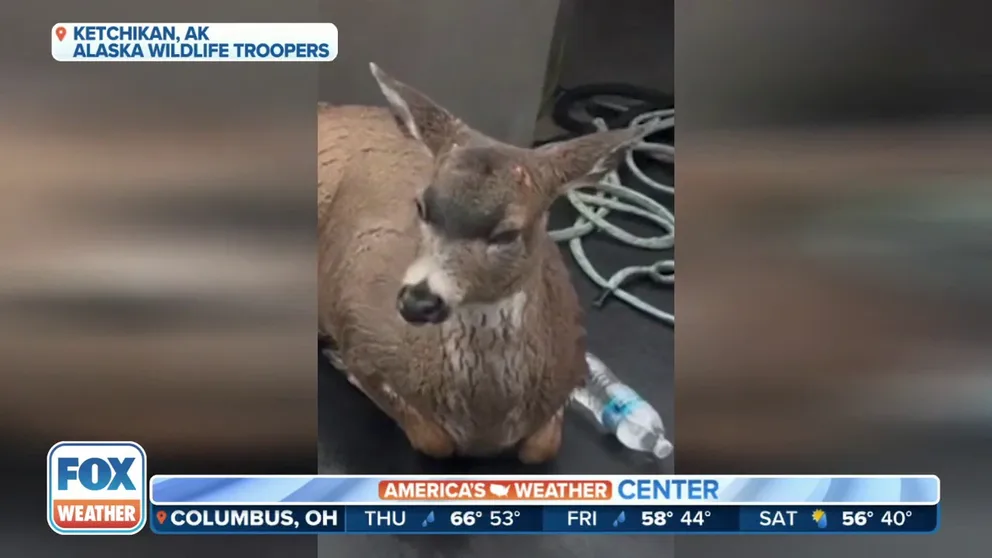Watch: Incredible deer rescue at sea 4 miles off Alaska's coast
"They are in rough shape right now, on their last legs," said the trooper who plucked the exhausted deer out of the frigid water.
Alaska Wildlife Troopers rescue 2 deer swimming 4 miles offshore
Alaska Wildlife Troopers found two small deer swimming four miles offshore in the frigid waters of Alaska. They pulled the shivering deer on deck and were not sure the animals would survive.
KETCHIKAN, Alaska – Wildlife Troopers cruising on patrol between the islands of Southeast Alaska were very surprised to find two small deer swimming four miles off the closest shoreline.
A trooper, realizing the deer would not survive that long in the 51-degree water, sprang into action. He scooped up the small animals and could feel them shivering as he placed them on deck.
"The guy in the back is doing pretty rough, he didn’t fight too hard, but we got him on. He swam right to the swim step," the trooper can be heard saying on the social media post of the creatures that generally avoid humans.
He said the second deer was fairing a little bit better. Still, he said the deer were "on their last legs" and fatigued.
HOW DEER AND ELK SURVIVE HARSH, SNOWY WINTERS
HAWAII FAMILY RESCUES PIG SWIMMING 2 MILES OFFSHORE IN PACIFIC OCEAN
Incredible deer rescue at sea
"Hopefully, they live, and we can go put them on shore somewhere," said the trooper.
The trooper gathered the still-shivering and damp deer in his arms and carried them to a beach.
"I had to pick them up and bear hug them to get them off our deck and get them on the beach," said the trooper, who was still out of breath but sounding relieved. "I am soaked to the bone."
He said that the deer would warm up while walking the beach.
"I think as they move, the blood will start flowing again," he continued.
After a couple of minutes, both deer trotted into the trees.

The deer in the front was the one the trooper was most concerned about. But, both scampered into the trees.
(Alaska Wildlife Troopers / FOX Weather)
Do deer get hypothermia?
Deer are uniquely adapted to survive the long, harsh Alaskan winters.
The deer have hollow hair, which traps the air. That layer of air, warmed by the body, insulates the animal, similar to down jackets insulating humans. Wet fur does not insulate though, and robs the body of heat.
"Wet Autumns begin to sap their energy as they fight against the heat loss caused by cold water falling on them, which percolates through between their hollow hair, chilling the body before falling off warmer than it was as rain," explained the British Deer Society webpage.
The society was talking about rain foiling the insolation. Deer can become hypothermic much faster while submerged in water.
The chances for a human surviving 50-degree water diminishes at under one-and-a-half hours, according to the Canadian Red Cross. Chances of survival are very slim past two hours and 45 minutes. In just 10 minutes, physical incapacitation and hypothermia set in, increasing the risk of drowning, an emergency room doctor explained to FOX Weather.
WATCH: FIREFIGHTERS STRUGGLE TO PULL ELK OUT OF FROZEN POND

A deer shivering and exhausted aboard the Alaska Troopers boat.
(Alaska Wildlife Troopers / FOX Weather)
Deer not ‘out of the woods’ yet
The deer are not out of danger once they dry off, either. Shivering is an involuntary reaction when skeletal muscles rapidly contract and relax to generate heat. That uses a lot of energy.
Deer spend much of their time in summer eating, stocking up energy as a layer of fat. If that energy/fat burns too fast, before the snow melts and food becomes more plentiful, the deer could starve and succumb to the extreme weather.
